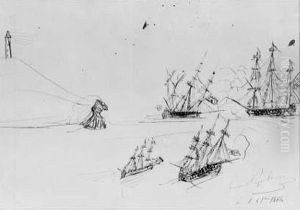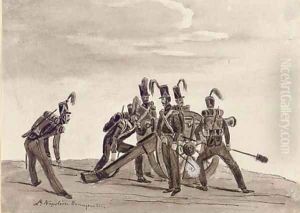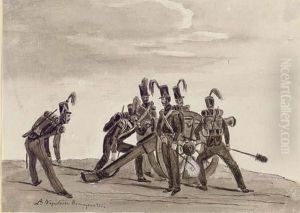Charles Louis Napoleon Bonaparte Paintings
Charles Louis Napoleon Bonaparte, also known as Napoleon III, was not an artist in the traditional sense of painters or sculptors but rather a significant political figure in French history, whose reign and actions profoundly impacted the arts and architecture of his time. Born on April 20, 1808, in Paris, France, he was the nephew of the famous Napoleon Bonaparte, the Emperor of France. His early life was marked by turmoil and upheaval, as his family was exiled after Napoleon's fall, which greatly influenced his ambitions and political beliefs.
Napoleon III's quest for power included several failed coups, leading to imprisonment and exile. However, his persistence paid off when he was elected President of the French Second Republic in 1848. By 1852, he had declared himself Emperor of the French, marking the beginning of the Second Empire, a period known for its significant transformation of Paris and its impact on the arts.
Under Napoleon III, Paris underwent extensive renovation led by Baron Haussmann, modernizing the city with new boulevards, parks, and public works, dramatically changing its architectural landscape. This era also saw a flourishing of the arts, as Napoleon III was a patron of the arts and initiated several policies to support artists and public monuments, significantly influencing the development of styles such as Realism and Impressionism.
Despite his contributions to the urban and cultural landscape of France, Napoleon III's reign was also marked by controversy, including his authoritarian regime and the disastrous Franco-Prussian War, which led to his capture and the fall of the Second Empire in 1870. He lived his last years in exile in England, where he died on January 9, 1873.
Although not an artist himself, Napoleon III's legacy in the arts and architecture is notable. His vision for a modernized Paris and his support for the arts during a period of significant change in French society and culture had lasting impacts on the city's appearance and the development of modern art movements.


